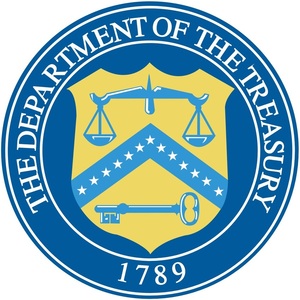
The U.S. Treasury Department and International Revenue Service on Dec. 22 released proposed regulations for the clean hydrogen tax credit created by the Inflation Reduction Act. The guidance, in part, addresses the production of clean hydrogen using biomass and biogas.
Provisions in the IRA created a production tax credit for each kilogram of qualified clean hydrogen produced by a taxpayer at a qualified clean hydrogen production facility. According to the IRS, the credit amount is dependent on the emissions intensity of the hydrogen production process and the taxpayer’s compliance with prevailing wage and apprenticeship requirements during the qualified clean hydrogen production facility’s construction, alteration and repair.
The proposed regulations issued on Dec. 22 provide definitions and procedures for administering and claiming the credit, including guidance for determining the lifecycle greenhouse gas (GHG) emissions rate resulting from the hydrogen production process. The guidance also provides procedures for petitioning the IRS for a provisional emissions rate, requirements for verifying the production and sale or use of hydrogen, and requirements for modifying an existing hydrogen production facility to obtain a new original placed in service date for purposes of the credit.
The proposed regulations address the use of the U.S. Department of Energy’s GREET model to calculate lifecycle GHG emissions, noting that the most recent version of GREET includes various hydrogen production pathways, including steam methane reforming (SMR) or autothermal reforming (ATR) of landfill gas with potential carbon capture and storage (CCS), and biomass gasification with corn stover or logging residue. The proposed regulations also address the use of a provisional emissions rate (PER) process to calculate the lifecycle GHG emissions of hydrogen produced using biomass not currently represented in GREET.
Within the proposed regulations, the IRS specifically invites public comments on the type of information hydrogen producers would be required to provide in order to document and verify the direct and indirect GHG emissions associated with the use of two types of electricity generation the agency said can be highly variable or uncertain—fossil fuel-powered electricity generation with CCS and biomass-powered electricity generation.
The regulations also note that the IRS intends to provide rules addressing hydrogen production pathways that use renewable natural gas (RNG) or other fugitive sources of methane, such methane from coal mine operations. “Such rules would apply to all RNG used for the purposes of the section 45V credit and would provide conditions that must be met before certificates for RNG or fugitive methane (representations of the environmental attributes of the methane) and the GHG emissions benefits they are meant to represent may be taken into account in determining lifecycle GHG emissions rates for purposes of the section 45V credit,” the IRS said in the proposed regulations.
“The Treasury Department and the IRS anticipate requiring that for purposes of the section 45V credit, for biogas or biogas-based RNG to receive an emissions value consistent with that gas (and not standard natural gas), the RNG used during the hydrogen production process must originate from the first productive use of the relevant methane,” the agency said in the proposed regulations. “For any specific source of biogas, productive use is generally defined as any valuable application of biogas (including to provide heat or cooling, generate electricity, or upgraded to RNG), and specifically excludes venting to the atmosphere or capture and flaring. The Treasury Department and the IRS further propose to define ‘first productive use’ of the relevant methane as the time when a producer of that gas first begins using or selling it for productive use in the same taxable year as (or after) the relevant hydrogen production facility was placed in service. The implication of this proposal is that biogas from any source that had been productively used in a taxable year prior to taxable year in which the relevant hydrogen production facility was placed in service would not receive an emission value consistent with biogas-based RNG but would instead receive a value consistent with natural gas in the determination of the emissions value for that specific hydrogen production pathway. This proposal would limit emissions associated with the diversion of biogas or RNG from other pre-existing productive uses.”
“For existing biogas sources that typically productively use or sell a portion of the biogas and flare or vent the remaining excess, the flared or vented portion may be eligible for first productive use as defined above if the flaring or venting volume can be adequately demonstrated and verified,” the IRS continued. “In such circumstances, the flared or vented volume may be determined based on the previous taxable year's flared or vented volume as demonstrated via reported data to programs such as the Greenhouse Gas Reporting Program. Requirements would be established to reduce the risk that entities will deliberately generate additional biogas for purposes of the section 45V credit, above historic and expected future levels or an equivalent metric, for example by generating biogas through the intentional generation of waste, and to ensure that other factors affecting the emissions rate of hydrogen produced with biogas-based RNG or RNG procurement via RNG certificates are taken into account. The Treasury Department and the IRS request comment on these and other potential conditions. Any fugitive sources of methane would be treated in the same fashion as described above for RNG.”
A public comment period on the proposed rule is open through Feb. 26. A public hearing is scheduled for March 25. Requests to speak and outlines of topics to be discussed at the public hearing must be submitted by March 4. Additional information and a full copy of the proposed rule is available on the Federal Register website.